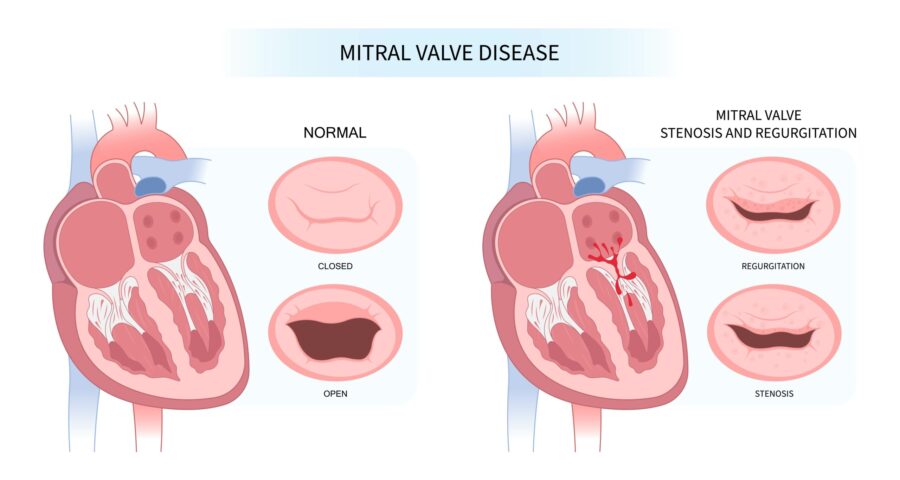Mitral valve disease is a common heart condition that affects millions of people worldwide. As a vital component of the heart, the mitral valve regulates blood flow between the left atrium and left ventricle. When this valve doesn’t work properly, it can lead to various health issues, some of which may be severe. In this comprehensive guide, we will explore the different types of mitral valve disease, their symptoms, causes, risk factors, and preventative measures.
Definition
Mitral valve disease refers to a group of conditions that affect the mitral valve’s function, leading to improper blood flow within the heart. The two primary forms of mitral valve disease are:
- Mitral Valve Regurgitation: Also known as mitral insufficiency, this condition occurs when the valve does not close tightly, causing blood to flow back into the left atrium. This backflow forces the heart to work harder to pump blood and can eventually lead to heart failure.
- Mitral Valve Stenosis: This condition occurs when the valve becomes narrow or stiff, restricting blood flow from the left atrium to the left ventricle. Over time, this can lead to an enlarged left atrium, increased pressure in the lungs, and heart failure.
Symptoms
The symptoms of mitral valve disease can vary depending on the severity of the condition. Some common symptoms include:
- Shortness of breath, particularly during physical activity or when lying down
- Fatigue or weakness
- Heart palpitations or irregular heartbeats
- Swelling in the ankles, feet, or abdomen
- Chest pain or discomfort
- Lightheadedness or fainting
Causes
Mitral valve disease can result from various factors, including:
- Aging: Age-related changes can lead to valve degeneration, increasing the risk of mitral valve disease.
- Rheumatic Fever: An inflammatory disease that can result from untreated strep throat, affecting the mitral valve.
- Congenital Heart Defects: Some individuals may be born with a malformed mitral valve, increasing the risk of mitral valve disease.
- Endocarditis: Infection of the heart’s inner lining can damage the mitral valve.
- Connective Tissue Disorders: Conditions like Marfan syndrome can affect the mitral valve’s structure and function.
Risk Factors
Certain factors can increase the risk of developing mitral valve disease:
- Family history of heart conditions
- History of rheumatic fever or endocarditis
- Age, as the risk increases with age
- Obesity, high blood pressure, or other cardiovascular risk factors
- Connective tissue disorders
Prevention and Management
While not all cases of mitral valve disease can be prevented, certain steps can help reduce the risk and manage the condition:
- Regular Check-Ups: If you have risk factors or a history of heart conditions, regular check-ups are essential for early detection.
- Heart-Healthy Lifestyle: Maintain a healthy weight, exercise regularly, eat a balanced diet, and manage stress.
- Avoid Smoking: Smoking increases the risk of heart disease and can exacerbate mitral valve disease.
- Prompt Treatment: If you have strep throat or other infections, seek prompt treatment to prevent complications like rheumatic fever.
When to See a Doctor
If you experience symptoms of mitral valve disease or have risk factors, consult a healthcare professional. Diagnosis typically involves a physical examination, listening for a heart murmur, and conducting imaging tests like echocardiograms or electrocardiograms.
Treatment may involve medications to alleviate symptoms and reduce strain on the heart or, in severe cases, surgery to repair or replace the valve.
Mitral valve disease is a common heart valve disorder that can have serious consequences if left untreated. Awareness of the symptoms, causes, and risk factors is crucial for early diagnosis and effective management. With proper care and a heart-healthy lifestyle, it is possible to live well with mitral valve disease.









